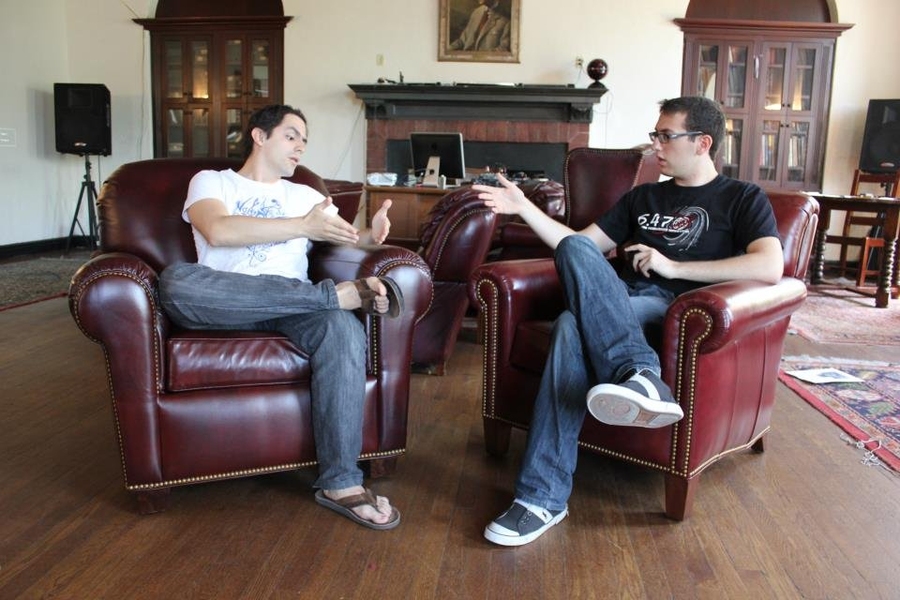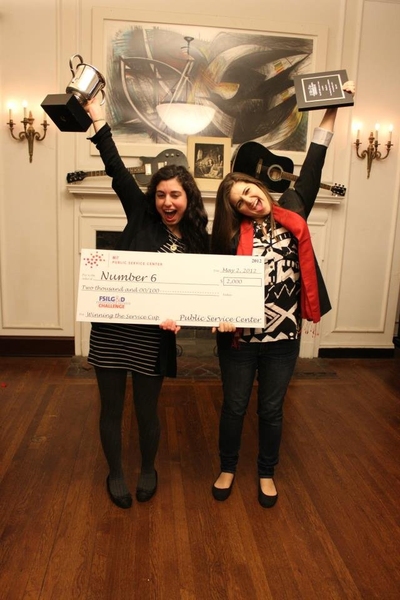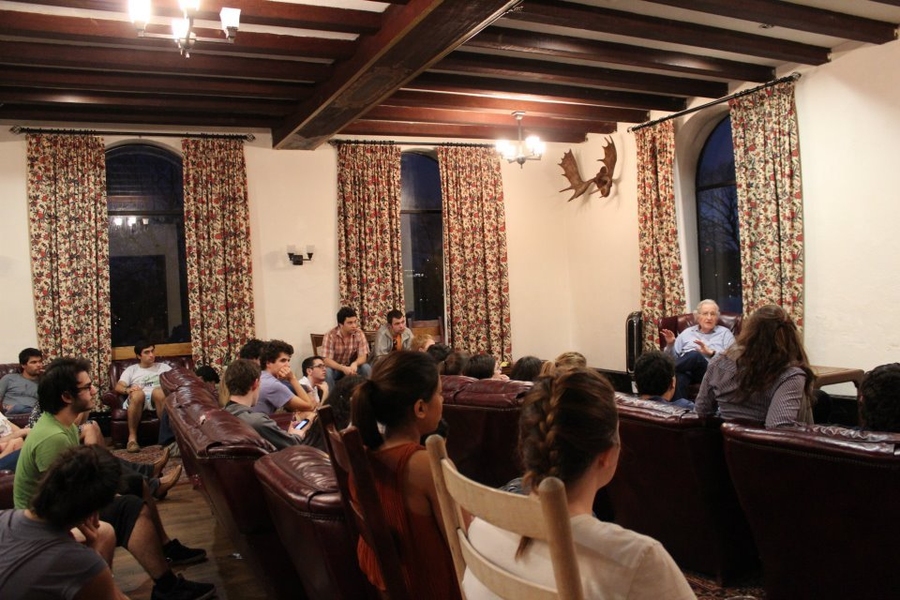1. Where does the “Number Six Club” name come from?
The Number Six Club was recognized as an organization in 1886 when a group of men, formerly belonging to the Alpha Tau Omega fraternity, created their own men’s club. According to the Number Six Club’s website, the Alpha Tau Omega president released fraternity secrets in 1883, causing many members to depledge and relocate to No. 6 Louisburg Square in Beacon Hill. After three years at their new home in Louisburg Square, the men’s club became known as the “Number Six Club,” after the building’s address.
2. What is the history of their fraternal ties?
Two “Sixers”, John Henry Towne and John Lawrence Mauran, joined Delta Psi after depledging Alpha Tau Omega and became the founding fathers of the Tau Chapter of Delta Psi, bringing it to MIT in 1889. The house moved from Louisburg Square to its current location at 428 Memorial Dr. in 1916.
The group maintained its name despite becoming part of a national fraternity. Their fraternity, more commonly known as “St. Anthony Hall,” became one of the first fraternal organizations to accept women in the late 1960s and the Number Six Club became a mixed-gender chapter in 1969.
3. How did the Number Six Club find its place at MIT?
The Number Six Club shares characteristics with both fraternities and independent living groups at MIT. It is the balance of these two that makes it so unique.
“At the end of the day, we are a fraternity — we just get the best of both worlds,” said senior Santiago Cuellar. “Nationally we are a fraternity, but we also have girls in the club. We have a great and complete living experience with people from around the world.”
The club follows the fraternity “rush” schedule in the fall, but extends lifetime bids that can be accepted at any time. Similar to Independent Living Groups (ILGs), the Number Six Club provides a diverse community-living experience, but possesses a distinct set of values. Its values include a love of learning, status as a literary community and its inclusiveness to the MIT community.
Adam McCready, the primary advisor for sororities and ILGs at MIT, said, “While the Number Six Club does not fit the mold of a typical fraternity, it undoubtedly does more than most others to act in congruence with the ideals of its fraternity’s founders.”
4. Who are the Sixers?
There are currently 55 members who call themselves Sixers, representing 35 countries. “About half of the current house members are American citizens,” said Number Six Club president Eyas Sharaiha, “but most of them have international ties.”
There isn’t a specific style of dress, type of music or personality that makes up a Sixer, but senior Monica Oliver believes there are definitely a few things that they all have in common. “You can’t physically point us out, but there is a strong degree of openness, respect and tolerance among all Sixers,” said Oliver.
5. What does The Number Six Club do?
The Number Six Club holds a variety of events throughout the academic year for members, as well as the MIT community. The club finds a variety of ways to reach out to surrounding organizations and individuals. It recently won the 2012 FSILG+D Community Service Challenge after hosting an Easter egg hunt and dinner for 25 at risk children from the Italian Home for Children.
Other community service activities that it participates in include: Relay for Life, fundraiser games, clothing drives and reading books to children. The Number Six Club also holds lectures twice a semester, hosts weekly coffee hours and organizes campus-wide events. The club also arranges private meetings for members, including initiation events, conferences, and formals.
6. How do you learn more about the club?
“We like to get to know members’ friends and other people from MIT,” Sharaiha said. “We believe in ‘continuous recruitment’ — anyone can visit or come to our open events.”
The Number Six Club is on Facebook (https://www.facebook.com/number.six.club) and shares news and photos from past and upcoming events. During open events, the Number Six Club welcomes the MIT community to visit its house at 428 Memorial Dr., between Burton Conner and MacGregor House.
For more information about the Number Six Club, visit its website at http://no6.mit.edu/.
The Number Six Club was recognized as an organization in 1886 when a group of men, formerly belonging to the Alpha Tau Omega fraternity, created their own men’s club. According to the Number Six Club’s website, the Alpha Tau Omega president released fraternity secrets in 1883, causing many members to depledge and relocate to No. 6 Louisburg Square in Beacon Hill. After three years at their new home in Louisburg Square, the men’s club became known as the “Number Six Club,” after the building’s address.
2. What is the history of their fraternal ties?
Two “Sixers”, John Henry Towne and John Lawrence Mauran, joined Delta Psi after depledging Alpha Tau Omega and became the founding fathers of the Tau Chapter of Delta Psi, bringing it to MIT in 1889. The house moved from Louisburg Square to its current location at 428 Memorial Dr. in 1916.
The group maintained its name despite becoming part of a national fraternity. Their fraternity, more commonly known as “St. Anthony Hall,” became one of the first fraternal organizations to accept women in the late 1960s and the Number Six Club became a mixed-gender chapter in 1969.
3. How did the Number Six Club find its place at MIT?
The Number Six Club shares characteristics with both fraternities and independent living groups at MIT. It is the balance of these two that makes it so unique.
“At the end of the day, we are a fraternity — we just get the best of both worlds,” said senior Santiago Cuellar. “Nationally we are a fraternity, but we also have girls in the club. We have a great and complete living experience with people from around the world.”
The club follows the fraternity “rush” schedule in the fall, but extends lifetime bids that can be accepted at any time. Similar to Independent Living Groups (ILGs), the Number Six Club provides a diverse community-living experience, but possesses a distinct set of values. Its values include a love of learning, status as a literary community and its inclusiveness to the MIT community.
Adam McCready, the primary advisor for sororities and ILGs at MIT, said, “While the Number Six Club does not fit the mold of a typical fraternity, it undoubtedly does more than most others to act in congruence with the ideals of its fraternity’s founders.”
4. Who are the Sixers?
There are currently 55 members who call themselves Sixers, representing 35 countries. “About half of the current house members are American citizens,” said Number Six Club president Eyas Sharaiha, “but most of them have international ties.”
There isn’t a specific style of dress, type of music or personality that makes up a Sixer, but senior Monica Oliver believes there are definitely a few things that they all have in common. “You can’t physically point us out, but there is a strong degree of openness, respect and tolerance among all Sixers,” said Oliver.
5. What does The Number Six Club do?
The Number Six Club holds a variety of events throughout the academic year for members, as well as the MIT community. The club finds a variety of ways to reach out to surrounding organizations and individuals. It recently won the 2012 FSILG+D Community Service Challenge after hosting an Easter egg hunt and dinner for 25 at risk children from the Italian Home for Children.
Other community service activities that it participates in include: Relay for Life, fundraiser games, clothing drives and reading books to children. The Number Six Club also holds lectures twice a semester, hosts weekly coffee hours and organizes campus-wide events. The club also arranges private meetings for members, including initiation events, conferences, and formals.
6. How do you learn more about the club?
“We like to get to know members’ friends and other people from MIT,” Sharaiha said. “We believe in ‘continuous recruitment’ — anyone can visit or come to our open events.”
The Number Six Club is on Facebook (https://www.facebook.com/number.six.club) and shares news and photos from past and upcoming events. During open events, the Number Six Club welcomes the MIT community to visit its house at 428 Memorial Dr., between Burton Conner and MacGregor House.
For more information about the Number Six Club, visit its website at http://no6.mit.edu/.








